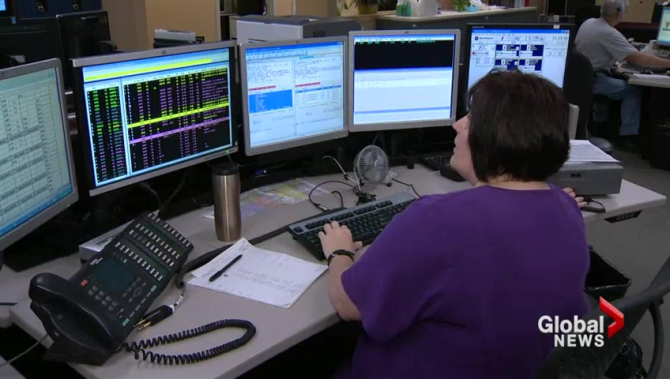TORONTO – Advocates for Next Generation 911 want smartphone users to not only have the ability to call their local emergency provider but also to send texts, photos and videos.

There are more than 28.4 million wireless phone subscribers in Canada, with more than one in five households having cellphones as their only form of phone service, according to the Canadian Wireless Telecommunications Association. However, adopting and implementing the advanced emergency system is far more complex than hitting “send” to 911.
“Consumers expect to be able to communicate with 911 in much the same way as they communicate with each other through their smartphones,” said Brian Fontes, CEO of National Emergency Number Association in Alexandria, Va.
“The unfortunate thing is that most 911 centres – both in Canada and the U.S. and in emergency centres of other parts of the world – are tethered to last-century voice-centric technology.”
Next Generation 911 would enable Internet protocol (IP) broadband capabilities, using what’s known as emergency service Internet, allowing 911 centres the ability to receive voice, video and data, Fontes said.
“The reason that that is important is because as much information as we can gain about the emergency situation, the better the ability to manage the resources that would attend to that emergency.”
Eric Torunski, executive director of the Canadian Interoperability Technology Interest Group, said his organization – on behalf of responders – is pushing for a co-ordinated approach to NG911 so that the standards would be the same across Canada.
For one thing, public-safety answering points – or PSAPs, where 911 calls come in – need to be able to seamlessly transfer data from the scene, he noted.

Get daily National news
The Industry Council for Emergency Response Technologies is teaming with the Association of Public-Safety Communications Officials, Canada to co-host a two-day forum in Toronto this September exploring “the human and technology elements of NG911.”
“We’re sort of at that precipice, if you will, where most of the components are largely in place and we’re just at the edge of beginning to implement,” said iCERT executive director George Rice, whose Washington, D.C.-based organization represents public safety and emergency response providers.
“Since we can’t simply turn off the 911 system across North America and the Caribbean, we have to have two parallel networks running at one time, meaning the legacy 911 systems will have to run while the IP-based, emergency-calling NG911 systems are built and put in place.”
Canadians who are deaf, hard of hearing or speech-impaired can register with their wireless provider for Text with 9-1-1 – but the service is currently unavailable in New Brunswick, Prince Edward Island, Quebec and Saskatchewan. It is ineligible in Newfoundland and Labrador and the three territories where enhanced 9-1-1 hasn’t been deployed, according to the T9-1-1 service website.
Barry Ritter, executive director of the Indiana Statewide 9-1-1 Board, said 88 of 92 counties in the state were eligible for text to 911 when the service was deployed in May 2014.
Ritter said a comprehensive public awareness campaign touted that while voice is best to reach 911, those needing to text – including the deaf or hard of hearing communities – could do so. However, the number of texts reported to the U.S. Federal Communications Commission in the past year were “minimal,” with around 32 counties receiving anywhere from 10 to 49 texts.
“Most people have been taught their entire life that in an emergency you call 911,” said Ritter. “So we believe that through each of those issues, the number of text sessions have remained low because individuals are continuing to call 911.”
APCO Canada president Gavin Hayes said the issue of data retention and security is also critical.
“If you get a homicide scene, you could have potentially hundreds of thousands of videos or pictures that come in, and whose responsibility is it to try to find the right piece of information. There’s a number of things that we look at.”
Many other issues remain unknown when it comes to NG911 adoption, including those that may be faced by communications centre staff, Hayes noted.
“Are you potentially going to get vivid images, live-feed video from very horrific scenes arriving in front of people who are either not trained or ill-equipped to deal with that sort of thing?
“If you ask the people in the comms centres right now, they are somewhat nervous as to what’s coming down the pipe,” he added.
“There are people who are of my generation who have had to make the quantum leap from computer-aided dispatch from just writing stuff down on a call card and answering the telephone.”







Comments